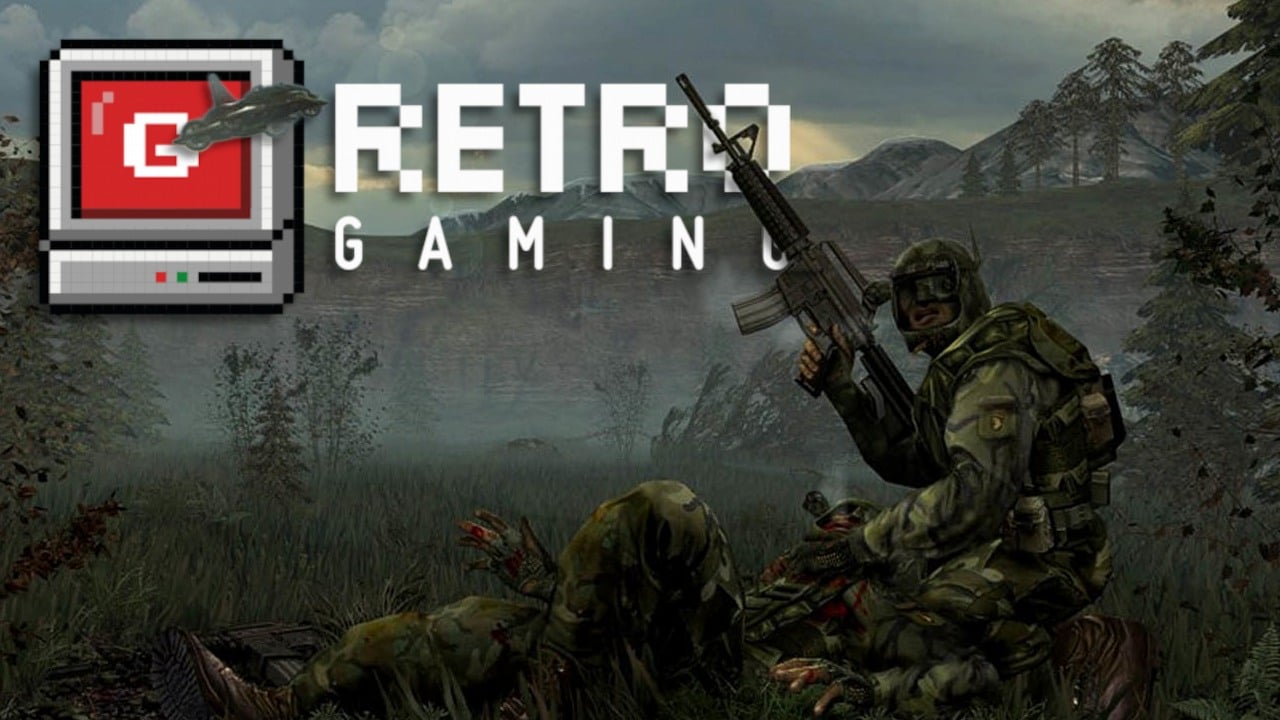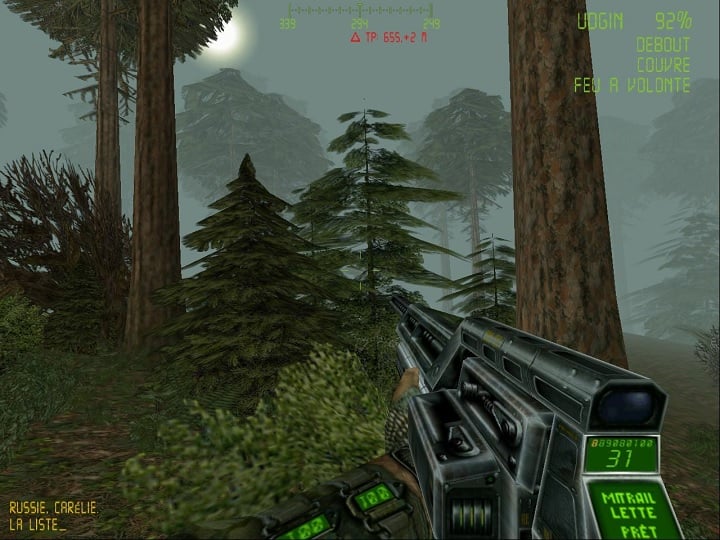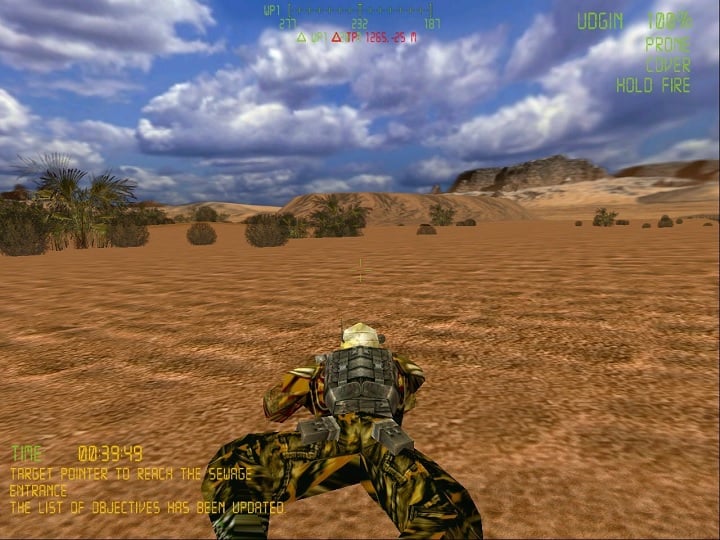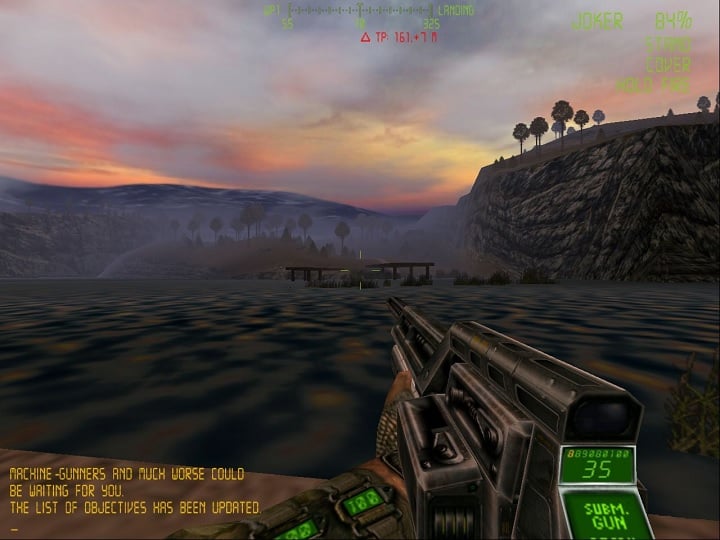
As a seasoned gamer with years of gaming under my belt, I can confidently say that Codename: Outbreak was a unique gem from GSC Game World, a studio now renowned for its S.T.A.L.K.E.R. series. This game felt like a precursor to Shadow of Chornobyl, with its open map structure, soldier management, and equipment management systems.
The renowned GSC Game World studio has earned global recognition through hit titles like S.T.A.L.K.E.R. and Cossacks, but it’s important to note that the first-person shooter (FPS) set in the Chornobyl Zone wasn’t their very first FPS project. In fact, back in 2001, they launched Codename: Outbreak, which is known as Venom: Codename: Outbreak in Ukraine. This game aimed to bring a unique spin to the tactical shooter genre. So, let’s explore some of the innovative ideas GSC Game World had before they embarked on the journey that led to the creation of Stalker’s story.
Guests from outer space
In the narrative of Codename: Outbreak, it didn’t offer overly complex concepts. Instead, it presented a tale where a piece of a comet, falling in Montana, not only brought about an impact but also introduced extraterrestrial life forms onto Earth. Neither the scientists, police officers nor even elite commandos could handle this alien menace. Eventually, it was the second military unit, guided by us throughout the game, who had to tackle the case and neutralize the threat.
Extensive preparations
In “Codename: Outbreak,” it wasn’t about charging headfirst into combat with a battle cry echoing; instead, it subtly suggested that tactical thinking and careful planning would be rewarded. Before embarking on our first mission, we were given a briefing hinting at this strategy. The game allowed us to pick members for our unit, each with unique specializations, strengths, and weaknesses. The secret to victory was finding the right combination of team members who could best carry out their assigned tasks.
The scenarios our soldiers encountered were diverse, ranging from the dense woodlands of Montana to the remote Kuril Islands, exposing them to forest, desert, and urban landscapes. A distinct camouflage was crucial in each setting. Moreover, we had the flexibility to determine the time of day for engagement and adjust the challenge level according to our needs.

One gun to rule them all
The game unfolded in expansive settings that allowed us free navigation, and during our assignments, we needed to stay alert because peril was potentially around every corner. Besides facing terrifying beasts, we also met human soldiers equipped with firearms, as the aliens had the ability to overpower humans.
Concerning weaponry, the developers came up with an intriguing concept for our collection. Instead of numerous distinct weapons, we were provided with a versatile multi-function firearm. Capable of functioning in various modes, it could transform into a machine gun or a sniper rifle, a rocket launcher, and even a laser. Moreover, it also supported attachments like a night vision device, which are indispensable for covert operations during the night.
As a gamer, let me tell you, that directional microphone was a game-changer. In many instances during the heat of battle, I could pick up on the enemy’s movements before they even appeared on my screen. It was a crucial tool that often meant the difference between victory and defeat.
Slowly, but forward
It turned out that the aforementioned ‘skin-saving’ strategy was crucial in the challenging game of GSC Game World’s Codename: Outbreak. In this game, not only were we significantly outmatched by our opponents, but they showed strategic prowess by hiding, summoning reinforcements, or retreating when things appeared unfavorable. Therefore, the secret to victory lay in staying vigilant, listening carefully, and gradually advancing. The game could be categorized as a stealth game, offering chances to sneak past enemies or silently dispose of them using the almost silent laser weapon.
It was fortunate that we always had someone ready to follow our commands alongside us. Another option for giving orders was rotating among team members, handling everything individually. Additionally, Codename: Outbreak provided a cooperative mode, extending the game’s playtime and enhancing the overall enjoyment.

Ground level problems
In most instances, we functioned like a unified team. Nevertheless, there were rare exceptions. If one of our comrades fell in combat, sadly, there was no means to revive them. Their absence was deeply felt throughout the game, as we continued to gaze at their portrait, bearing the grim reminder of “killed in action.” On the other hand, if a duo successfully completed a mission, they would grow stronger and develop their abilities. As you can guess, the greater the strength of a soldier, the more profound the pain of his loss on the battlefield was felt.
In the game Codename: Outbreak, soldiers were required to handle equipment management, as they had a set “load limit” that couldn’t be surpassed. The complexity arose from the fact that all items, ranging from weapons to the suit and mission-acquired supplies like healing kits, each had their own weight. This frequently presented a challenge in deciding which items to carry on our upcoming journey and which to discard.
“Protostalker”
In my gaming world, when I first dived into Codename: Outbreak, it was more than just a game – it was an immersive experience. The graphics were top-notch, but what really stole the show were the intricately designed environments that made me feel like I was truly there in the midst of the action. The reviews echoed my sentiments, praising the game’s visual appeal as a key factor in its success.
Looking back, one could argue that the game in question served as a “trial run” or “proof-of-concept” for GSC Game World’s future masterpiece, the S.T.A.L.K.E.R. series. Its open map design, soldier equipment management, and focus on intricate actions laid the groundwork for Shadow of Chernobyl and its sequels, despite the absence of themes related to space threats or team battle mechanics.

What happened next?
Title “CodeName: Outbreak” didn’t garner much acclaim in the art department. It earned an average score of 55 out of 100 on Metacritic. However, it seemed to resonate better with gamers.
Although GSC Game World had moved forward, it didn’t rest on its laurels. By publishing additional strategies and unconventional games like the futuristic racer Hover Ace and the first-person shooter FireStarter, the company was also diligently working on its most ambitious project yet. Following the launch of S.T.A.L.K.E.R.: Shadow of Chornobyl, the landscape had significantly changed compared to what it was previously… However, that’s a tale for another day.
How to play Codename: Outbreak today?
Currently, you can purchase Codename: Outbreak directly from GOG.com for $5.99. Alternatively, if you’re looking for a more budget-friendly option, you might find a previously owned copy of the game in its original packaging for under $3 elsewhere.
Read More
- SUI PREDICTION. SUI cryptocurrency
- COW PREDICTION. COW cryptocurrency
- Exploring the Humor and Community Spirit in Deep Rock Galactic: A Reddit Analysis
- WLD PREDICTION. WLD cryptocurrency
- KSM PREDICTION. KSM cryptocurrency
- Harvey Weinstein Transferred to Hospital After ‘Alarming’ Blood Test
- EUR IDR PREDICTION
- W PREDICTION. W cryptocurrency
- ADA EUR PREDICTION. ADA cryptocurrency
- GLMR/USD
2024-11-18 14:32